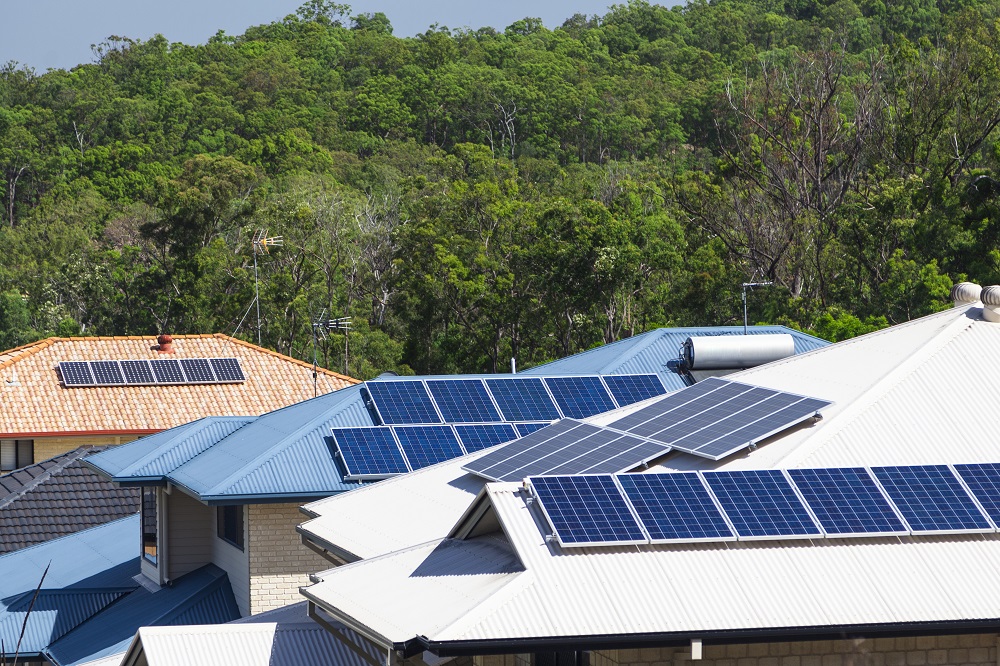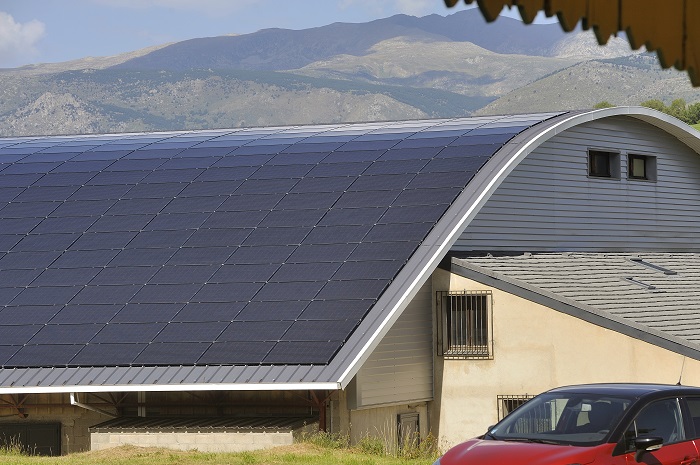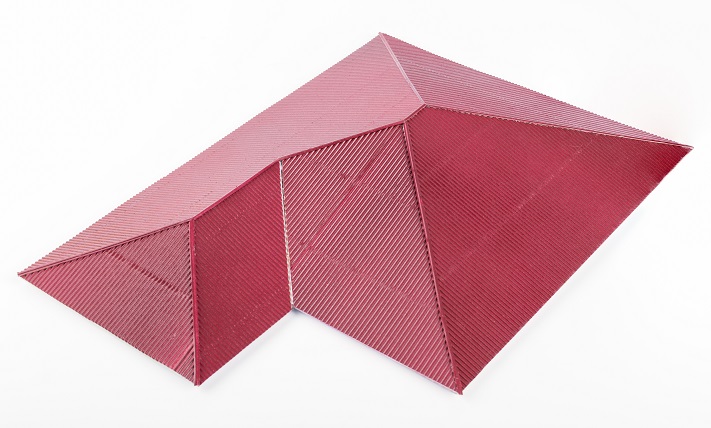The Most Common Roof Types in Australia

Roofs have come a long way since their first appearance. There are now plenty of roof styles and material options for them. Each type is architecturally unique with their own pros and cons.
It is undeniable that roofs are an important part of the house. It keeps the entire building structurally sound while providing support for it as well.
During the rainy, winter, and sunny seasons, roofs are there to protect our heads against environmental elements.
In Australia, there are several roof options. The right roof is not just about the design you want, but should also be reliable and functional. Your choice will depend on where you live. Consider the topography and climate in your area to know which to choose based on the selections given below:
1. Flat Roof
Many modern homes in Australia have flat roofs. This type is easy to build and also considered to be safe and economical. Its construction can vary, but it typically uses cement, along with other materials, including:
- Single-layer membrane: Also known as elastomeric or plastomeric (depending on the material used), single-layers can come in different varieties, such as neoprene, polyvinyl chloride, and ethylene propylene diene monomer (EPDM). The most common is EPDM or synthetic rubber for both residential and commercial properties.
- Modified bitumen: This material was introduced in the 1960s as an alternative to built-up roofing (BUR). It has the same technology as BUR with the addition of more robust roof wear layers (cap sheets) using a polymer.
- Built-up roof: BUR has been around for more than 120 years. It is installed using numerous layers of roofing felt.
Despite the name, flat roofs are not exactly flat, although the slope is quite low. This way, they can still drain water. However, the problem with this type of roofing is that it holds rain and snow longer than sloped roofs. They require more maintenance than most other types.
Flat roofs in Australia are common in apartment blocks. They are also popularly used in high-rise and commercial buildings.
2. Skillion Roof
A variety of flat roofs is skillion. The main difference is that there is an apparent pitch for water to escape. It has a surface sloped at a particular angle.
The term skillion means a smaller addition to an already existing roof. Therefore, it is not attached to another roof surface in any property. A skillion can be added to create a multi-level effect. One main advantage of this type of roofing over flat roofs is that it is easier to maintain. Its slope allows it to drain water more effectively.
A skillion roof also offers the following benefits:
- You can install solar panels.
- Installing skylights should not be a problem as well.
- Construction is easy.
- It is affordable because it only has a single slope.
Before you choose this type of roof, think about the following limitations:
- Skillion roofs do not provide plenty of attic space and may even eliminate it.
- The roof is more sensitive to high winds than other types.
Materials for a skillion roof can be anything from standing seam metal to wood shakes and shingles.
3. Butterfly Roof
Another popular type of roof in Australia is the butterfly, which is a combination of two skillion roofs. They are placed together using a box gutter that is installed down the centre of the construction.
Compared to skillions, a butterfly roof is more expensive because of the complexity of the installation. They also require more materials. Plus, the cost of maintenance may far outweigh the benefits. You have to consider the detailing process of the box gutter since it can be quite pricey.
Nevertheless, a butterfly roof has its advantages, including:
- It is a natural source of water since it is mostly designed for water tanks. You can use the collected water for watering plants and even showering.
- Butterfly roofs offer good drainage. Therefore, you never have to worry about getting rid of water build-up on your roof, which can lead to mould growth if not taken care of.
- This roof is wind-resistant because of the aerodynamic structure. Even heavy storm winds cannot blast this roof away.
- You have the option to use larger windows since the slope of the roof is the exact opposite of conventional roofs. Bigger windows offer improved air ventilation and can give your home a more spacious feel.
Consider the pros and cons of a butterfly roof before you choose it for your home.
4. Curved Roof

A curved roof is easy to recognise with its soft and round appearance. The base is thicker than traditional roofs.
Just by looking at the pictures of homes with curved roofing, you can already tell that this type is expensive. It is also costly to maintain.
If you live in coastal or beach areas, you will find that many houses have curved roofs. However, developing places also love this type of roofing.
A curved roof is beautiful to look at, but it is not recommended for people who are not willing to inspect frequently. Due to its shape, it can accumulate dirt faster, so you have to check it often to ensure it is not keeping debris.
You may be considering a curved roof because of the following reasons:
- It is aesthetically pleasing. The modern visual appeal makes this roof one of the primary choices of younger people looking to create an edgy home for themselves.
- A curved roof is customisable. The architect will match the design with the area while also listening to the preferences of the owner.
- Maintenance is often not as difficult as you may think. The roof has the same characteristics as a standard shed roof. In this case, it is easier to maintain because it can resist high winds.
- Curved roofs are eco-friendly. They are known to help contribute to lowering CO2 emissions.
Curved roofs are indeed full of benefits, but you have to understand that they should be designed carefully. Only an experienced architect should provide you with the design; otherwise, you will encounter several problems in the long run.
5. Gable Roof
Another type of roof that many Australians love is the gable roof. Also known as peaked roofing, gable has a triangular shape that you often see in many places. It is pointed at the centre, which is why it is known as a peaked roof. It is a classic design in which two roof planes are connected. The ridge is at the centre that holds the two planes, which gives you space to add an attic in your home.
Perhaps one of the reasons why a gable roof is popular is that it is cost-effective. Whether in installation or maintenance, gable roofs are not as expensive as other options. If you have a problem with the roof and it needs restoration, the service is budget-friendly. However, it is recommended that you or a professional inspect once every few months. This way, you are guaranteed that there are no leakages.
If you are considering a gable roof, here are some of its benefits that may convince you to choose it from your main options:
- It is easy to construct, especially when compared to butterfly roofs or other complex styles.
- Because of the simplicity, installation is much cheaper. It will not use many materials as well, which is why a gable roof is the best option for those on a budget.
- You can get extra space under the roof, thanks to its style. You can have a loft, an attic, or another roof, which you can access through a stairway in your home.
A gable roof is also the least likely to suffer from water and snow damage. The steep slope allows the roof to shed water easily.
6. Hip Roof

Finally, we have a hip roof, which has at least three pitched planes. They all slope downwards from the points at the top. This type of roof is also widely used in Australia. For most homeowners, it offers plenty of advantages, including great shade. The house also becomes more stable with the help of this type of roofing.
Those in windy and coastal areas may want to choose a hip roof because of the stability it offers. Other benefits include:
- Extra living space by adding a dormer crow’s best.
- Withstand different weather conditions, including wind, snow, and rain.
- Natural drainage with all the sides sloping down.
Compared to gable roofs, a hip roof is more expensive. More materials are needed, and the construction is more complicated.
Have you considered which roof type is best for you? Consult Perth Roofing and Gutters, and we will help you make the right decision before we install it for you.
